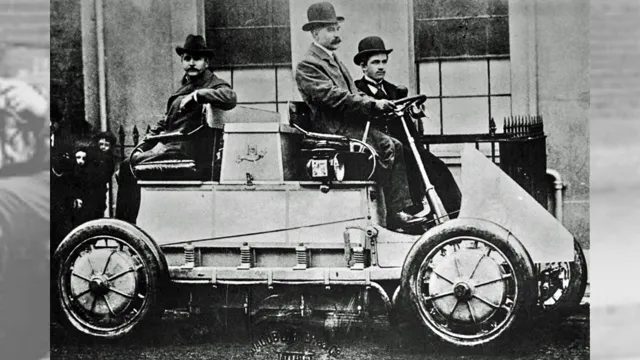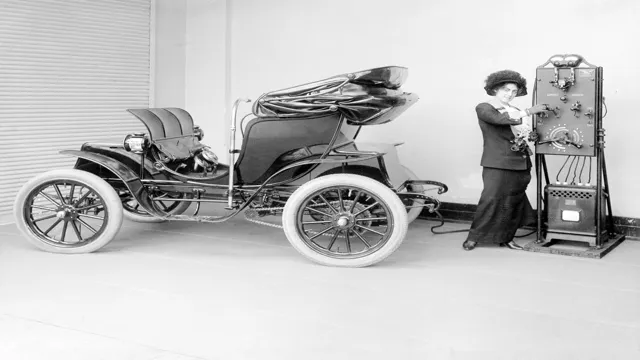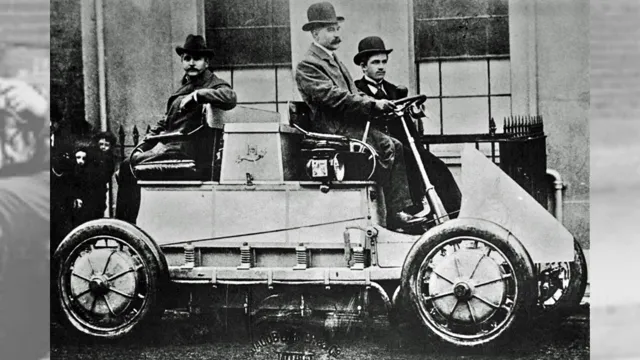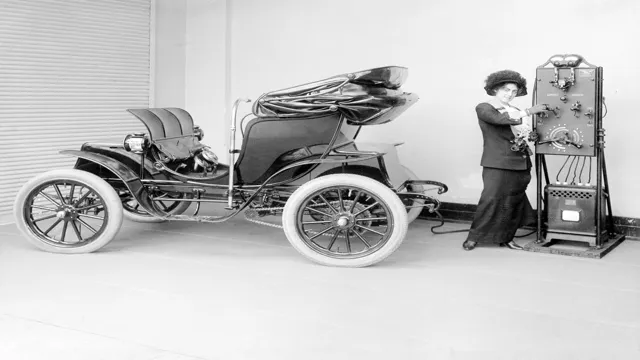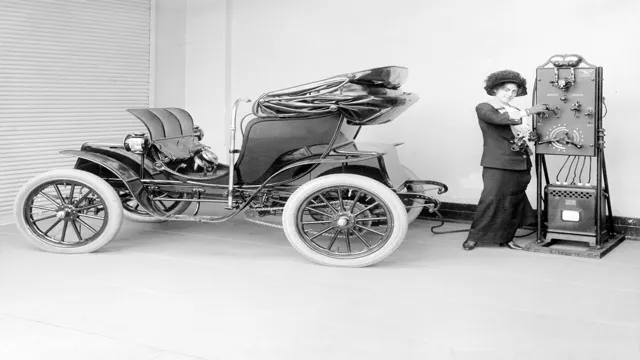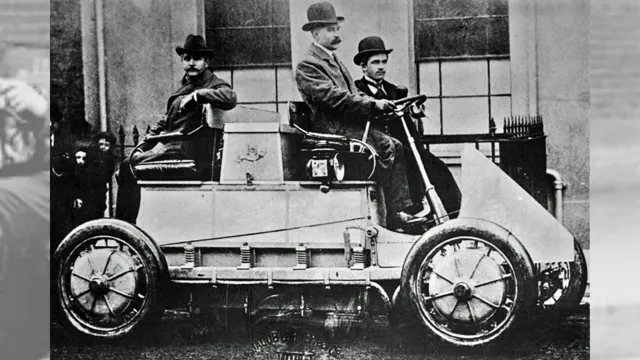A Shocking Evolution: The Fascinating History of Electric and Hybrid Cars
Electric and hybrid cars have gained widespread popularity in recent years, but have you ever wondered about their history? The electric car predates gasoline-powered cars and was invented in the 1830s, but it was not until the early 2000s that they began to gain traction in the mainstream. Hybrid vehicles, on the other hand, were first introduced in the late 1990s and have since become a common sight on the roads. In this blog post, we will take a journey through the history of electric and hybrid cars.
We will explore the development of electric vehicles from their earliest prototypes to the cutting-edge models available today. We will also delve into the evolution of hybrid cars, from the first mass-produced hybrid in the late 1990s to the latest plug-in hybrids with extended battery range. We will examine the many technological advances that have made electric and hybrid cars a viable and sustainable alternative to gasoline-powered vehicles.
We’ll also discuss the environmental benefits of these cars, including reduced emissions and improved air quality. Whether you’re a die-hard car enthusiast or simply curious about the history of electric and hybrid cars, our comprehensive guide will provide you with a complete overview of these innovative vehicles. So join us as we explore the fascinating world of electric and hybrid cars and discover how they’re changing the automotive industry forever.
Early Days of Electric Vehicles
Electric and hybrid cars have been around since the early days of the automobile industry. Around the turn of the 20th century, electric vehicles were actually more common than gasoline-powered ones. They were a popular choice for those who wanted a quiet, clean, and efficient mode of transportation.
However, advancements in gasoline-powered engines and the availability of cheap oil made the gas-powered cars more practical and affordable. In the late 1960s and early 1970s, concerns about oil shortages and pollution renewed interest in electric and hybrid cars. Companies like General Motors and Ford experimented with electric cars, but these efforts never gained mass appeal due to high costs and limited ranges.
It wasn’t until the early 2000s that electric and hybrid cars became more mainstream, with the introduction of the Toyota Prius and Tesla Roadster. Today, electric and hybrid cars are rapidly gaining popularity as people become more conscious of their environmental impact and seek more sustainable transportation options.
Invention of the Electric Car
Electric Car Before the invention of gasoline-powered automobiles, electric vehicles already existed. During the late 19th and early 20th centuries, electric cars were beginning to gain traction, especially in urban areas. In fact, during the early 1900s, electric vehicles were preferred over gasoline-powered cars for short commutes or city driving.
At the time, electric cars had several advantages over gasoline-powered vehicles, including lower operating costs, less noise, and zero emissions. However, with the invention of the electric starter for gasoline engines, gasoline cars did not require manual cranking, making them more convenient and accessible for a wider market. Moreover, improvements in gasoline engines made them more powerful and able to travel longer distances, leaving electric cars behind in popularity.
Despite this, some companies continued to manufacture electric vehicles, and they remained a niche market throughout much of the 20th century. However, with concerns over climate change, rising fuel prices, and advances in battery technology, electric vehicles are now experiencing a resurgence, and they are becoming more common on our roads.

Trends in Early 1900s
Electric vehicles were not always the sleek, modern machines we know today. In fact, the early days of electric cars date back to the early 1900s, when electric-powered vehicles dominated the roads. In those days, the streets were filled with clunky, heavy vehicles that were powered by lead-acid batteries, which would often run out of juice before the driver reached their destination.
Despite these challenges, electric vehicles were a popular choice for those looking for a more efficient and environmentally-friendly mode of transportation. However, with the invention of the gasoline-powered internal combustion engine, electric cars began to fade from popularity. It wasn’t until recent years that electric cars have once again gained popularity, and this time, they are sleeker, more efficient, and more powerful than ever before.
Gasoline Dominance and Hybrid Introduction
The history of electric and hybrid cars is an interesting one, marked by gasoline dominance and the slow introduction of hybrid technology into the automobile industry. In the early days of cars, gasoline was the primary fuel used, and electric and hybrid options were virtually non-existent. It wasn’t until the 1990s that hybrid technology began gaining traction, with the introduction of the first hybrid vehicle, the Toyota Prius, in 199
Since then, the popularity of hybrid and electric cars has increased steadily, with more manufacturers incorporating these options into their lineups. However, gasoline-powered vehicles still remain the dominant choice for most consumers due to factors like affordability and convenience. As society becomes more environmentally conscious, it will be interesting to see how electric and hybrid cars continue to evolve and impact the automobile industry.
Beginning of Mass Produced Cars
At the dawn of the mass-produced automobile, gasoline quickly became the dominant source of fuel. This was due to its efficiency, affordability, and the abundance of oil reserves found in the United States. However, in recent years, hybrid cars have been introduced to the market, offering an alternative to solely gasoline-powered vehicles.
Hybrid cars use a combination of gasoline and electric power to gain maximum fuel efficiency and reduce emissions. Although gasoline is still the most widely used fuel source for cars, the introduction of hybrid technology shows that there are alternative options for drivers who want to reduce their environmental impact. As society becomes increasingly aware of climate change and the importance of sustainability, it will be interesting to see how the automotive industry adapts to meet these demands while still providing the convenience and freedom of personal transportation.
Filling Station Development
Gasoline Dominance and Hybrid Introduction – A New Era of Filling Station Development Gasoline has long been the primary fuel choice for transportation, with petrol stations dominating the roadways. However, with increasing concern for the environment and the rising popularity of hybrid cars, the filling station development is changing rapidly. It’s not just about gasoline anymore.
With innovative hybrid technology on the rise, a new era of filling station development has begun. Owners of existing filling stations are now considering introducing hybrid technology as a way to adapt to these shifting trends. Some stations have already begun offering electric charging points in addition to traditional gasoline pumps.
Additionally, hybrid cars have been steadily gaining popularity as people are conscious of the impact of their CO2 emissions. This shift in consumer demand is prompting filling station owners to consider what other offerings they can provide to remain competitive. Moreover, the shift towards sustainable and eco-friendly fuels is gaining momentum, and it’s likely filling stations will need to accommodate them in the future.
This might include alternative fuels such as hydrogen, which can power fuel cell vehicles that generate electricity non-pollutingly. Filling station development is entering a new era, with gasoline dominance slowly fading as hybrid technology gains ground. While it’s still early days for alternative fuels, the future looks promising.
As demand for eco-friendly transportation rises, filling stations must adapt to remain relevant to consumers. The transition isn’t going to happen overnight, but as more and more people adopt hybrid technology, petrol stations will need to continue to revolutionize their offerings. In conclusion, the transition may be gradual, but the humble filling station as we know it is evolving into something far more than merely filling up your car with gasoline.
Introduction of Hybrid Cars
Introduction of Hybrid Cars Gasoline has always been the primary fuel for vehicles, with diesel coming in at a close second. However, these options come with their fair share of environmental concerns, including air pollution and greenhouse gas emissions. This is where hybrid cars come into play.
These vehicles use both gasoline and electric power to run, allowing for much cleaner emissions and better fuel economy. With hybrid cars, combustion engines are only used when necessary, making them a greener alternative to traditional cars. Additionally, hybrid cars are becoming increasingly accessible and affordable, making them a great option for those looking to make a positive impact on the environment while saving some money at the gas pump.
So, as gasoline dominance continues to be a concern, the introduction of hybrid cars offers a promising solution.
Modern EVs and Hybrids
Electric and hybrid cars have come a long way since their inception. While electric cars date back to the mid-19th century, it wasn’t until the late 20th century that hybrids and true electric cars became commercially viable. The first modern electric car, the General Motors EV1, was released in 1996 but was discontinued in 1999 due to lackluster sales.
However, with advancements in battery technology and increasing concerns over environmental issues, electric and hybrid cars have resurged in popularity. Today, there are numerous options on the market, offering varying ranges and features. From the affordable Nissan Leaf to the luxurious Tesla Model S, there’s an option for every budget and lifestyle.
As the world shifts towards renewable energy, it’s clear that electric and hybrid cars are not just a fad but a sign of the changing times.
Tesla’s Impact on the Market
Tesla has had a significant impact on the automotive market by introducing modern, high-tech electric vehicles and hybrids. These vehicles have revolutionized the automotive industry, paving the way for a more eco-friendly future. Tesla’s Model S, Model X, Model 3, and Model Y are all electric vehicles that boast impressive driving ranges and performance capabilities.
They have been a game-changer for the industry, forcing other manufacturers to invest in electric and hybrid technologies. Tesla’s innovation in the market has not only helped reduce our carbon footprint but also created new job opportunities for those working in the EV industry. The popularity of Tesla vehicles has also led to the development of a new age of small-scale EV manufacturers, which are building cars with unique designs and eco-friendly features.
The rise of modern EVs and hybrids marks a new era in automotive innovation, and Tesla is leading the way towards a brighter, more sustainable future.
Environmental Advantages and Disadvantages of EVs and Hybrids
When it comes to environmental advantages and disadvantages, modern EVs and hybrids are a mixed bag. On one hand, these vehicles emit significantly less greenhouse gases than traditional gas-powered cars. This means less pollution and a smaller carbon footprint, which is great news for the environment.
However, the production of EVs and hybrids can still be quite energy-intensive, and the batteries used in these vehicles rely on materials that can be harmful to the environment when mined and disposed of. Additionally, while EVs are emission-free when driving, they still require electricity to charge, and the source of that electricity can have an impact on the environment depending on how it is generated. As with any technology, there are both pros and cons to consider, and it’s important to weigh them carefully when deciding whether an EV or hybrid is the right choice for you.
What Can We Expect in the Future?
As electric and hybrid cars continue to gain popularity, we can expect a significant increase in the production and availability of these vehicles in the coming years. The history of electric and hybrid cars has been tumultuous, with ups and downs in production and sales, but with advancements in technology and increasing concerns about the environment, we are seeing a renewed interest in these eco-friendly cars. In the future, we can also expect to see a greater variety of electric and hybrid cars available, including more affordable models for the mainstream market.
As battery technology continues to improve, we may see cars with longer driving ranges and faster charging times, making them even more practical for everyday use. The growth of electric and hybrid cars will also have a significant impact on the automotive industry, as manufacturers shift their focus towards producing more environmentally-friendly vehicles. Overall, the future of electric and hybrid cars looks bright, with more options, increased production, and a greater focus on sustainability.
Conclusion
In conclusion, the history of electric and hybrid cars is one of innovation and adaptation. From the early days of crude electric vehicles to the high-tech hybrids of today, these cars have been at the forefront of the battle against climate change and the quest for more sustainable transportation. Though the road has been bumpy at times, with false starts, setbacks, and even a few dead ends, electric and hybrid cars have persevered, driven by the vision of a cleaner, greener future.
So as you zip down the highway in your quiet, efficient electric or hybrid vehicle, take a moment to appreciate the long and winding path that brought you here. Who knows what lies ahead, but one thing is for sure: the future of driving is electric, and the world is all the better for it.
FAQs
When was the first electric car invented?
The first electric car was invented in 1837.
When did the first hybrid car hit the market?
The first hybrid car, the Toyota Prius, hit the market in Japan in 1997 and in the US in 2000.
What is the difference between a hybrid and an electric car?
A hybrid car has both an electric motor and a gasoline engine, while an electric car runs solely on electricity.
What are some benefits of owning an electric or hybrid car?
Benefits of owning an electric or hybrid car include lower fuel costs, reduced emissions, and often government incentives or tax credits.
